Bogaji is the name of the traditional Korean wrapping cloth, also known as pojagi (보자기). It became popular during the Joseon Dynasty (1392-1910) but has changed over the years. The cloth itself holds a variety of uses, ranging from everyday domestic use as tablecloths, covering food and bedding, and wrapping precious objects even within a religious context. One of our tour organizers, Youngmin Lee, is an expert on Bogaji. Naturally, she found a magnificent exhibit at a gallery with the interesting name of Paradise Zip. The exhibit was the body of work created by a renowned Bogaji artist. Unfortunately, I’m unable to provide her name as all of the information was in Korean with no translation–not even her name. The variety of ways she interpreted Bogaji was amazing.

Paradise Zip Art Gallery
Bogaji with a traditional patchwork look.

“Patchwork” style
A number of pieces were framed in white or cream.

Patchwork style bogaji
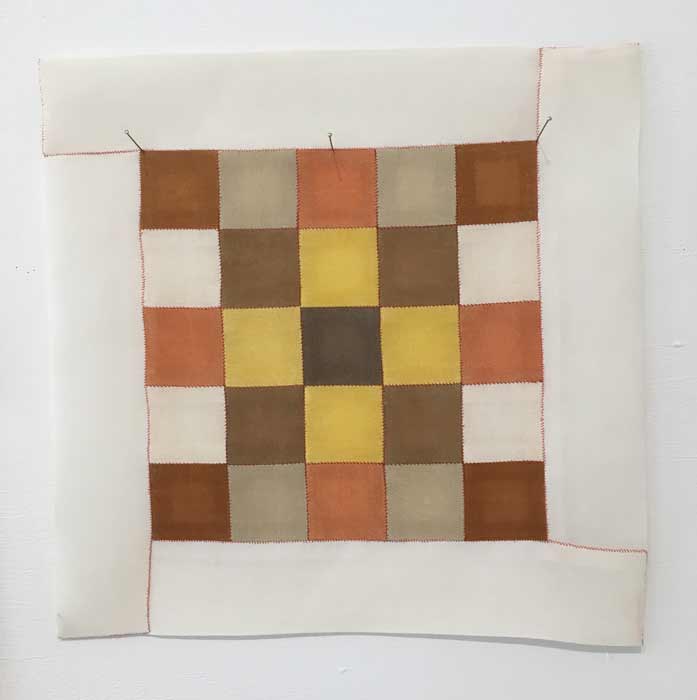
“Patchwork” Bogaji
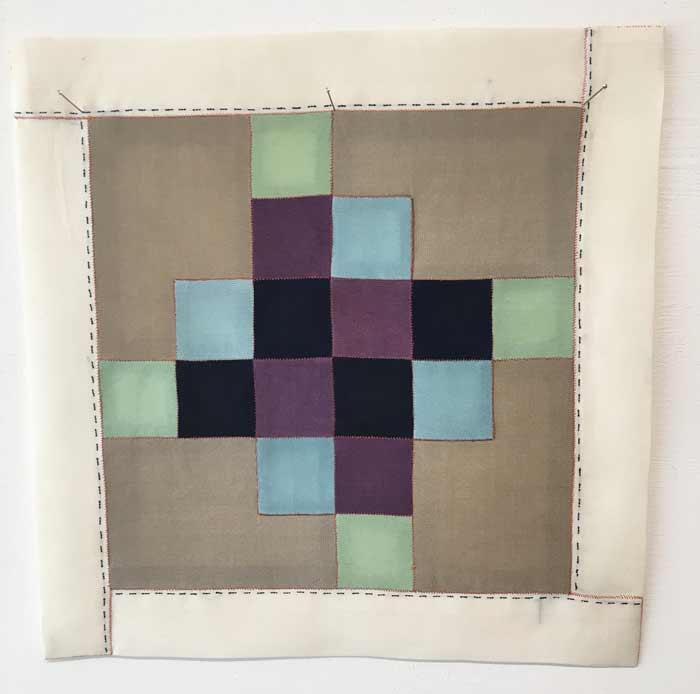
Cream border

Off centered patchwork
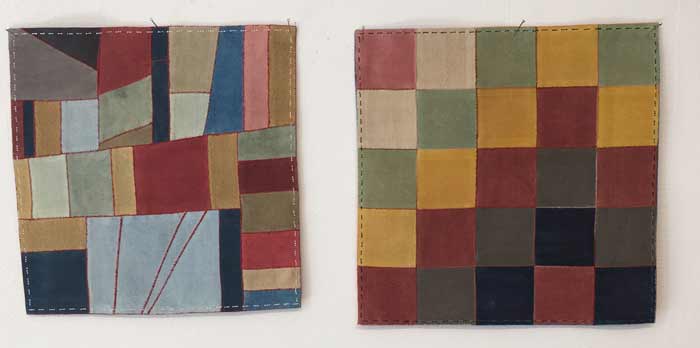
Patchwork style and free-form piecing

Larger patchwork style Bogaji
Pattern created through stripped squares.

Patterned Bogaji
Many of the Bogaji works feature “liberated” piecing much as we see in quilts.
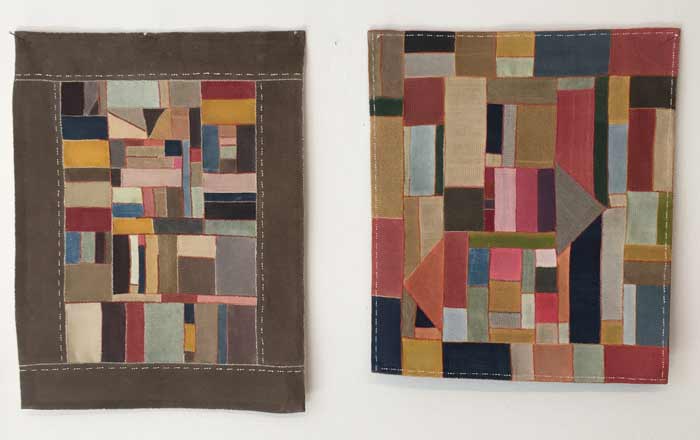
Liberated piecing
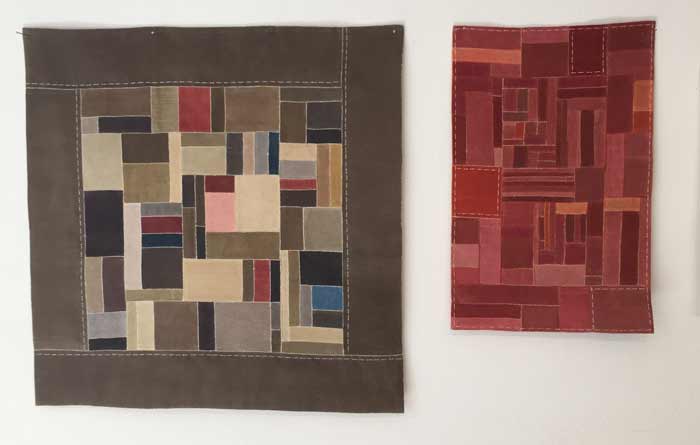
Liberated piecing

Liberated piecing

Freeform neutrals
The colors and values of the Bogaji below are well-placed for visual interest and movement.

Free form Piecing
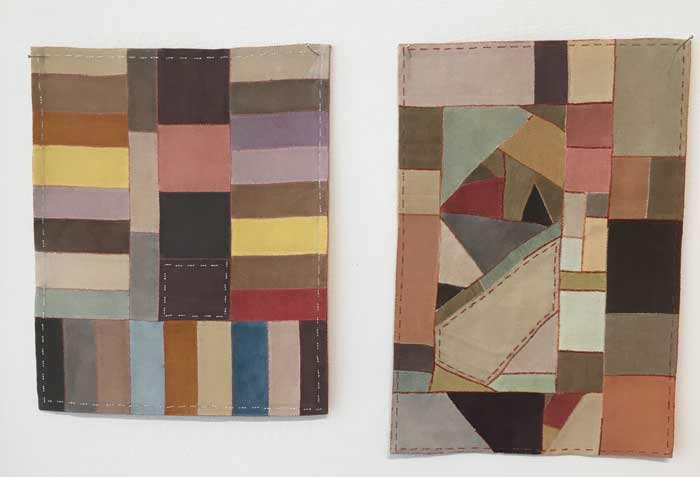
Pieced Bogaji
Wonderful multi-colored pieced blocks.

Great pieced block arrangement
I really liked the monochromatic pieces. You might think they wouldn’t be interesting, but I found them quite visually effective. These first pieces have the tie to wrap the cloth around an object.

Traditional wrapping cloth

Wrapping cloth with tie

Wrapping cloth with Tie
I loved the way some of the pieces created shadows which, for me, added to the presentation and mood of the work.

Monochromatic Bogaji with tie
The artist played with shape creating Bogaji in long vertical strips.
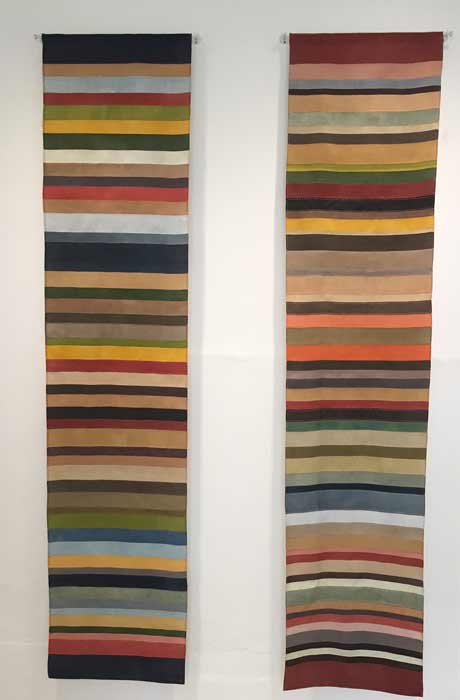
Side by Side wall hangings

Bogaji in stripes

Monochromatic lengthwise Bogaji
Very interesting strip arrangement with irregular lower edge.

Largely vertical arrangement
And Bogaji in horizontal presentations.

Horizontal Presentation
The presentation below really caught my eye with the monochromatic cream mounted loosely on the brick wall.

Creative presentation
I loved the color scheme of this Bogaji. It’s the same as my kitchen!
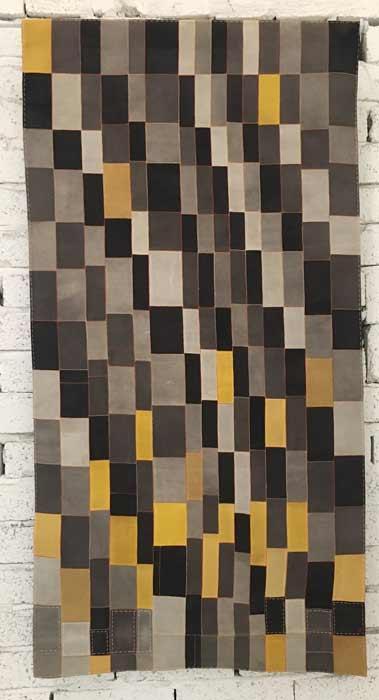
Black and Yellow Bogaji
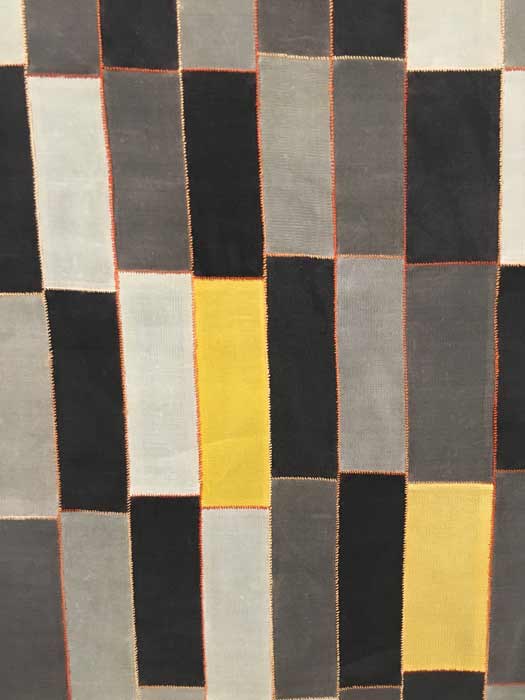
Detail shot
I think the complementary color scheme is very effective in the piece below.
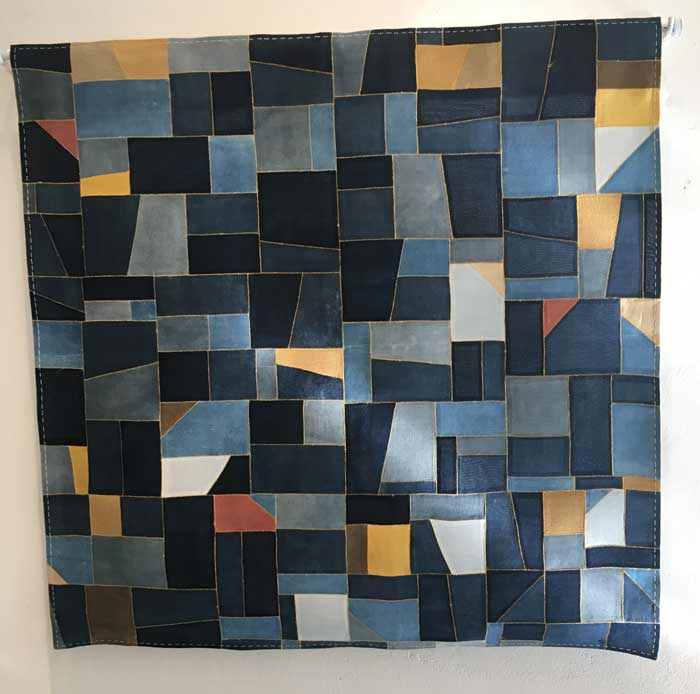
Indigo Bogaji
The change in scale of the patches is effective in this Bogaji.
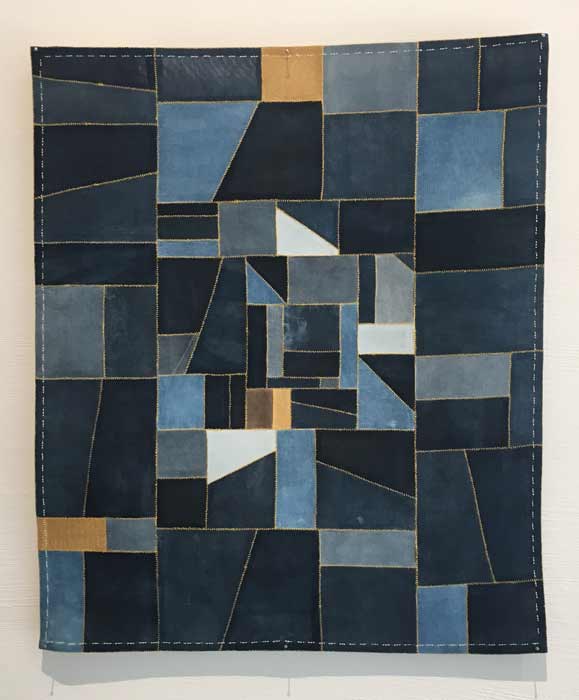
Indigo Bogaji
Another piece I really admire for the neutral colors and irregular edges.
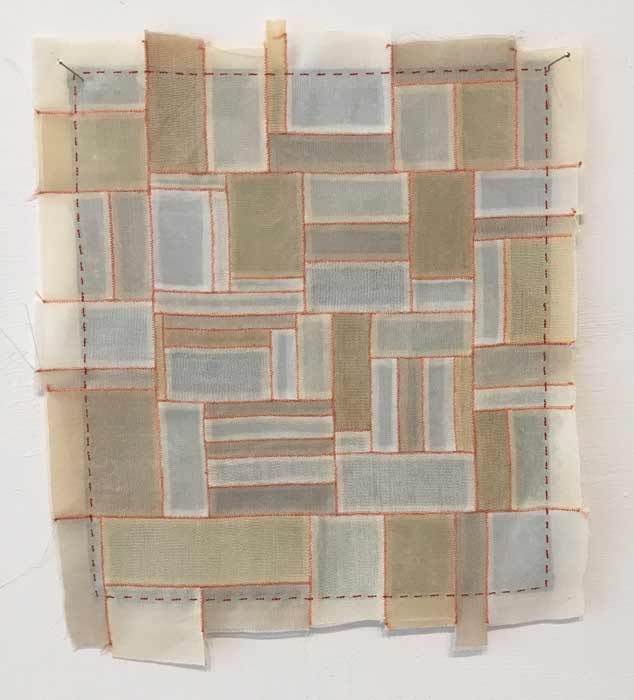
Neutral color scheme

Detail shot
Another great piece with an irregular edge treatment.

Irregular Edge Treatment
One of my two favorite presentations: a grouping of miniature Bogaji mounted around one inch from the wall.
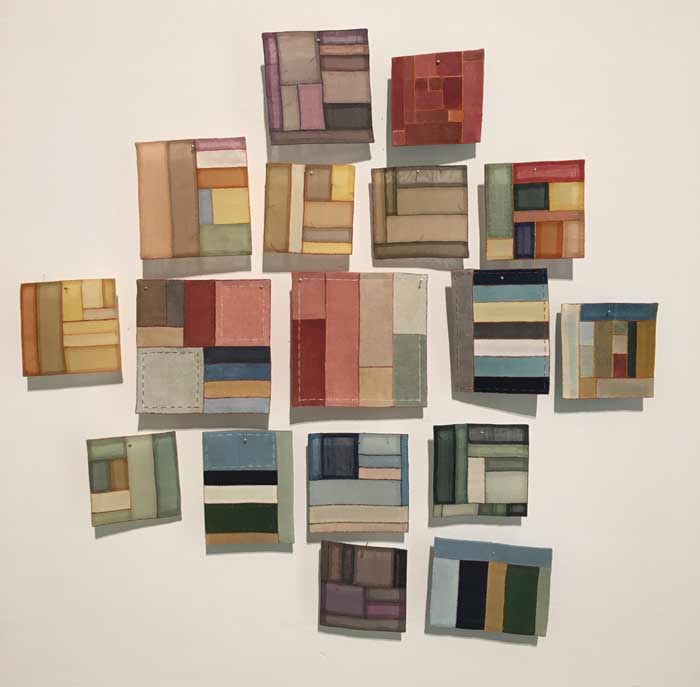
Group presentation
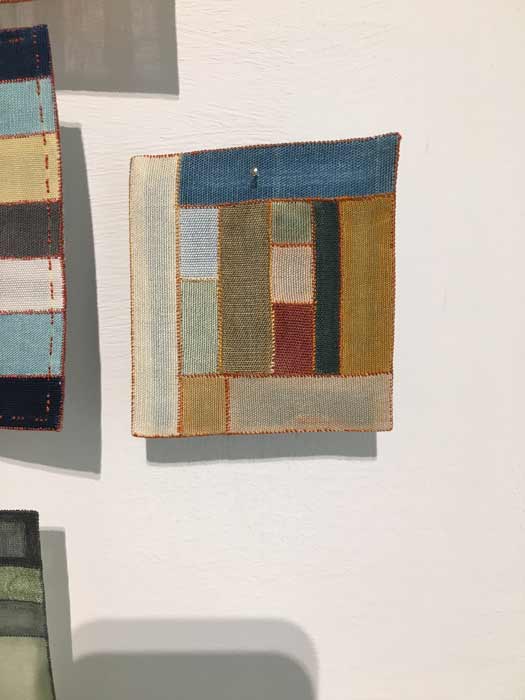
Detail shot
And this is my other favorite pieces and presentation. Hung in front of a window, the Bogaji looks ethereal.
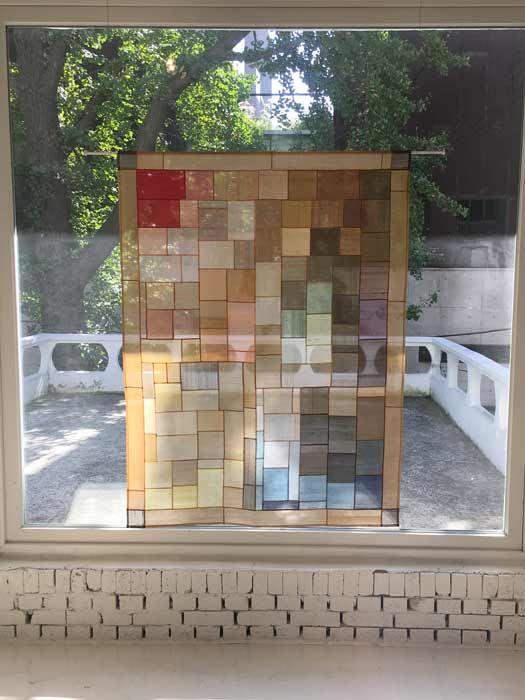
Bogaji window presentation


